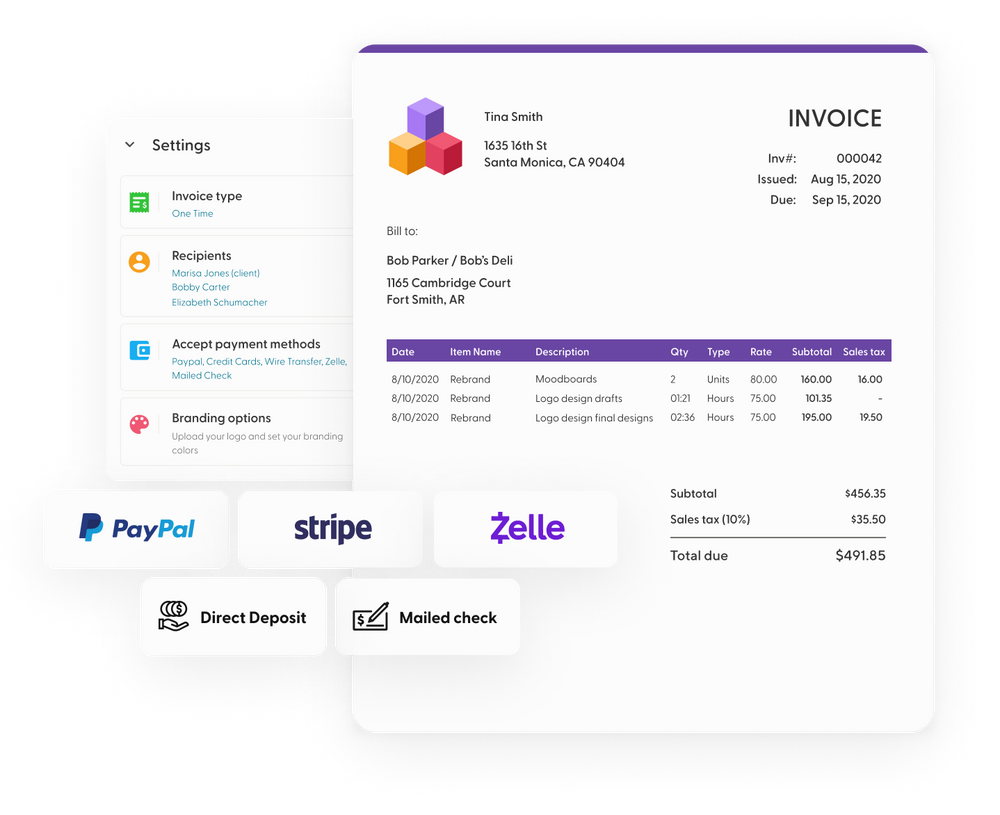Negotiating sales is a top priority when it comes to overall business practices. Price anchoring is a proven technique for increasing your sales.
Anchor prices are price points that establish the value of your service in someone's mind, whether you offer that exact price or not.
Knowing and understanding different negotiating and price-setting techniques is vital to operating a successful business. No matter the business you’re running/planning to run, negotiating will eventually become a part of it. A simple and easily understood negotiating tactic that can and should be integrated into your business plan is price anchoring.
What is a price anchor?
Price anchoring helps to give clients or potential business partners a base price point that can easily be referenced throughout the decision-making process. The importance of setting a base price is not only essential in any form of marketing of your product but also weighs heavily on how customers see your business potential.
The base price is the idea of an initial price point. It gives an overview of the entirety of what the value of your product is, while the anchoring allows the client to give or take from that base reference point.
Price anchoring is seen more often in regular life than ever before, especially with the sales volume that is now what we know as online shopping. There have been numerous times of mindlessly scrolling through social media and coming across a “sale” from an online shopping fav! It could be something like the new pair of Nike’s you’ve been endlessly looking to find the best-discounted price for. There it is, “$200 now $150!” This is the most basic definition of price anchoring.
The original price was $200, giving the client or shopper a base price and offering a pretty significant discount. The sale price now being $150. The base price helps the buyer to understand the true value of the product and the discount they’re receiving. There are a variety of techniques and tactics that can be used; keep reading to learn more.

Tactics of price anchoring
Alright, so there are actually a few different ways that price anchoring works. Undoubtedly, the above-mentioned technique is possibly the most easily understood and the case of social media scrolling the most seen. But it’s most definitely not the only option out there. Here are 3 different price anchoring examples or tactics.
1. Strike-through prices
This was mildly covered in the above-mentioned section. The cross-out method is super common and the most widely known form of price anchoring. The essential point of developing and advertising strike-through prices is to encourage potential buyers to believe that they are getting a great deal.
Ultimately, they probably are getting a great deal! But in most cases, the business or price setter marks the original price much higher than the sale. Making the discount look very inviting, even though, in reality, it might not be quite that much of a discount. Customers tend to see and react to the purchase price without questioning the reality of the discount.
2. Comparative package pricing
Comparing the competition can be a bit more of a risky tactic. When using this method of price anchoring, it’s important to know and understand your competition. While also being 100% confident in your product, make sure that potential clients can get a full understanding of your product and why it’s maybe cheaper than the competition. It’s quite easy to make these comparisons just by simply saying something like, “Compared to similar products and services at $50, $60, or $70, get this product at $45!” Comparing the competition can work great if done correctly.
In some cases, this tactic can be more harmful than good. If a competition strikes back, which they often will, it can make for quite a difficult turnaround in your case. If the competition sees you’re offering $45 and then uses the strike-through tactic to offer $40, well, you’ve probably lost that competition. Essentially, that’s why it’s so important to not only be confident in your product but also to know and understand the competition.
3. Tiered pricing strategy
If you’re a freelancer, this package price comparison is most likely no stranger to your knowledge. This is used very often when purchasing different software or online subscriptions. In this price anchoring tactic, one should offer at least 3 different packages to their consumers.
One package for the consumer on a budget, the next for a middle-of-the-road consumer, and the last for the premium consumer. Each of these with its own price, and the tactic requires the middle option to be highlighted as a fan favorite. Offering three or more options on your pricing page gives the customer a choice but also positions your preference as not too cheap and not too expensive.
The psychology of price anchoring
As we know, marketing is strongly based on the psychology of consumers' needs and wants. Over the past few decades, that concept hasn’t really changed much. What has changed, though, is the methods of marketing and the understanding of psychology.
Over time, the world has been able to grasp how the mind and buying process works. Anchor pricing is one of those psychological tactics that can help you to see the best ways to reach consumers and keep your pricing strategy strong.
Here are 3 reasons that setting an anchor price will help not only keep your pricing strategy holding up strong but will also give you a better understanding of your consumers or clients.
1. Anchor price affects perception
Being aware of the prices of absolutely anything is essential when making decisions about purchasing goods and services. There’s nothing better than going on a bender for a few hours comparing prices, and yes, people genuinely spend hours doing exactly that. In most cases, whenever someone is shopping, they compare different products, features, services, and plans.
Psychology has shown time and time again that humans love a good bargain. It feels good to think that we have walked away with the most rewarding option for the least money and effort spent. Although it may feel like we tricked the retailer, in reality, they planned it all along.

2. The power of suggestion and the psychology of the mind
Anxiety affects us all in some way or another, and for many of us, that anxiety hits a peak when it comes to making decisions. Decision-making has never been easy and continues to challenge the business world day after day.
Have you ever stared at the menu at a restaurant for hours because you promised yourself you’d try something new, only to order the cheese quesadilla the minute the waitress gets to you? Yeah, we’ve all been there, and that’s totally okay! But that’s also why the power of suggestion leaves even the most indecisive people with an easy way out!
Restaurants offer specials or meals of the day or something to that effect to try and curb the anxiety of deciding on a meal. This also helps to avoid someone going with the $5.00 chicken quesadilla rather than the $12.00 Chicken Burrito, essentially the same thing.
This doesn’t necessarily change when it comes to marketing online products and services. Clients still often feel overwhelmed with all of the options out there, and again, possibly with the different packages offered solely by you. Ultimately, making a “preferred purchase” or “most often purchased” option is highly recommended.
Don’t go overboard
It’s important to keep a balance of the prices that are being anchored. Keeping balance may not be easy, but it’s important to find that center point that your consumers are attracted to. This goes along with the comparison package that was made.
It’s important for people to have that safety net between something too small (like the basic) and something way too over the top (like the premium products). The middle ground gives them what they need to get by, but with the feeling that they aren’t the lowest or the highest.
Obviously, this isn’t totally foolproof, and yes, some will go big and some will go small. But the idea is that the majority go right for the middle.
Freelancers can implement an anchor pricing strategy
At this point, you probably have some ideas of different ways to implement the strategy into your own business plan. That’s awesome! If you don’t have those plans quite yet, the following strategies are the best way for freelancers to go! The reference above for the entire breakdown of each of these tactics:
Comparative package pricing
We know that comparing the competition is a great tactic to use. It's also become favorable among freelancers due to the following:
- It's free
- It's simple
- Anyone can do it
Create a tiered package pricing comparison
Just like comparing the competition, creating a tiered package pricing strategy should also be a top tactic used by freelancers. Tiered package pricing gives the opportunity to show a higher and lower tier while pushing consumers to choose the middle of the two prices. Giving the freelancer the chance to easily and confidently market your product at the price you want.
How can Indy help?
Indy offers many of the tools you need to support your anchor pricing strategy. You can use Indy to create proposals to send to prospects. Include your anchor prices in your proposals. You can use Indy’s Forms tool to get feedback on your pricing structure. Once you’ve negotiated a good rate, use Indy’s Contracts tool to put it all in writing and secure your business deal. You can get started with Indy today for free!



